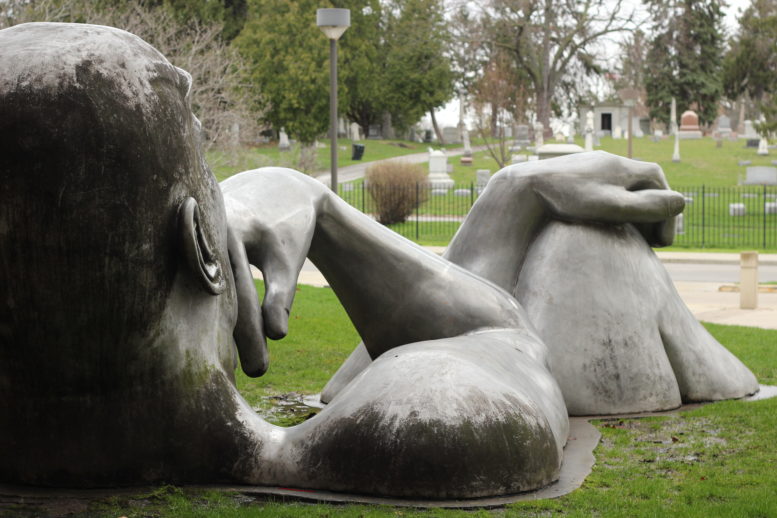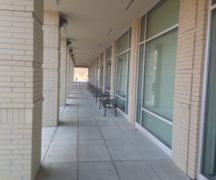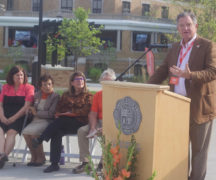By DAVID DUPONT
BG Independent News
With numbers in hand, the BGSU administration is moving into the action phase of its an in-depth analysis that looks at how many students enroll in programs across campus, and how many stay in them.
Originally called the program viability analysis, it caused consternation among faculty, who fear it is a way to cut programs, which could be majors or minors.
Provost Joe Whitehead told Faculty Senate: “The question is, do our program portfolios really reflect the interests of our students and families?” The survey is intended “to see how we can maximize student success and enrollment… to make sure we’re moving in right direction.”
The survey, which is anticipated to happen annually, has been completed, and the dean’s reports have been delivered to his office, Whitehead said.
Now the decisions on what actions based on the data will be made during the next semester.
[RELATED: New BGSU initiative puts academic programs under the microscope]
Whitehead reported on the initiative to the Board of Trustees at the March meeting.

He noted the initiative is now being called program “vitality” analysis. “I had feedback from campus that ‘viability’ is not a positive term, so I’m using program vitality analysis,” he said. “When you’re a physicist you’re very literal, so I’m practicing my soft skills here.”
The analysis looked back at three years of enrollment and retention numbers. That, faculty has pointed out, includes the pandemic period. Retention was measured by whether it was over or below 78.3 percent, the retention rate for the first-time, full-time cohort of students from fall, 2020.
This also comes at a time when the university’s traditional undergraduate enrollment is slipping downward.
Programs were put in four buckets, Whitehead said.
The analysis found:
- 28 programs had increasing enrollment and increasing retention
- 35 had increasing enrollment and decreasing retention
- 43 had decreasing enrollment and increasing retention
- 50 had decreasing enrollment and decreasing retention
The analysis also identified 24 programs with enrollment of 20 or fewer students. Those programs overlap with the programs in the four buckets.
Those with increasing enrollment and increasing retention will be retained. Others will have to take specific steps to increase enrollment and/or retention.
Programs could be modified or designated for in-depth analysis in the next academic year.
Those actions could involve major curricular changes with more than a quarter of a programs requirements changed. Or it could mean restructuring the program by transitioning it from a major to a minor or integrating it into another program.
Also, marketing and recruitment to bring more students into programs and keep them there.
The deans are charged with making those recommendations, Whitehead said.
Programs that have dropping retention may need to make changes to more directly tie it to a career, Whitehead told the trustees.
Asked later, if he was surprised that the largest number of programs fell into the decreasing enrollment, decreasing retention category, he said, that academia likes to add programs, but is less inclined to close them.
David Jackson, president of the BGSU Faculty Association, said he hopes the data from the analysis is shared with faculty soon. “There’s a tendency to expect faculty produce by very specific deadlines and for the response time to be open ended.”
Beyond that, he said, he has three concerns.
First, just because a program has low enrollment doesn’t mean it’s inherently a less valuable program. I think we have to be careful about extrapolating low enrollment with low value.
Every university has a variety of programs. Some are high profile, high enrollment programs that the institution brags about. Yet others are more modest, but still necessary.
His second concern is that faculty and program administrators don’t have much if any influence over what majors student decide to pursue. “Are we going to be judged and evaluated and assessed on factors that are not in our control?”
Jackson’s third concern is that students do change majors, and faculty and program administrators do have some control over that. But if resources are going to be allocated to growing programs, and the rest are threatened with merger or elimination, it can produce an unhealthy competition.
He’s already heard that there may be “poaching” or recruiting students from similar majors. That, Jackson said, “creates a moral hazard.”
This program analysis coincides with the university having to produce a state mandated report on low enrollment programs or programs duplicated in other neighboring institutions.
State law requires universities to conduct this study every five years, and the trustees must approve the report at its September meeting.
Universities must look at other institutions within the same JobsOhio economic region. The Northwest Region, which includes Bowling Green, encompasses 17 counties.
This means looking at programs that both University of Toledo and BGSU offer.
Some programs like nursing are in such high demand, that having two programs is necessary, Whitehead told trustees.
In other cases, the universities can work together to provide the programs more efficiently.
Five years ago the study resulted in UT and BGSU signing an agreement providing a clearer structure for students to take foreign language courses at either school. So a lower demand course, Arabic, for example, can be offered at one school. In the case of Arabic, it is offered at Toledo.
[RELATED: BGSU & UT agreement boosts courses in world languages & cultures]
While changes in technology do require shifts in curricula, none of the programs being looked at are archaic, Jackson said.
“There is nothing inherently wrong with an institution assessing its array of offerings and deciding what it should be doing and what it shouldn’t be doing. But some things need to be done no matter what. There are certain things a university has to have in order to be considered worthy of being a university.”





